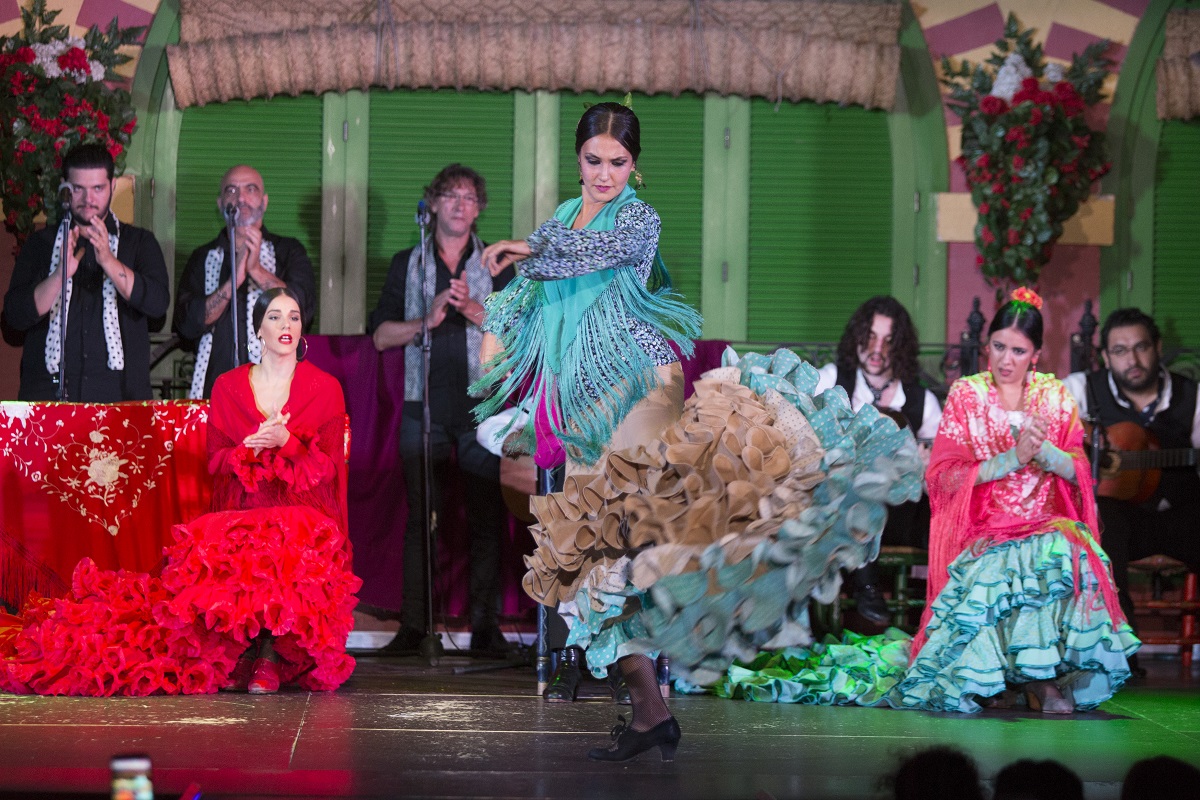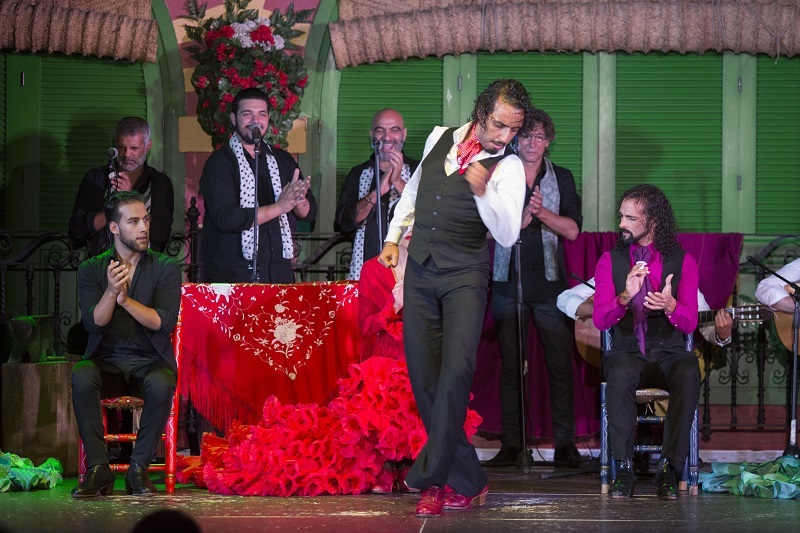
Flamenco dance, like singing and guitar, have been integrating different elements over time, as a result of the influence they have had from other cultures such as Arabic, Jewish or gypsies. The result of this miscegenation is an art as rich and diverse as the one we know today.
Let’s say that flamenco singing, playing and dancing are the ‘basics’ of this art. Elements that share common features, but have also had their own origin and evolution.
Although at first the attention of flamenco was focused on the voice of the singer, little by little the dance was taking center stage in the performances. Since then, this artistic expression has developed until it has its own style within dance.
Let’s look at the flamenco dance, in the elements that make it up and shape it. The development of flamenco music prompted the birth of dance, which first appeared, recognizably, in the 18th century. Throughout its history, it has evolved to become the artistic expression it is now.
In its origin, flamenco dancing took place in the courtyards and taverns. Later, he made the leap to the old cafe singers. It is, in these scenarios, where this artistic expression is acquiring greater identity. In part, thanks to the use of platforms that printed brilliance to the zapateado of the dancers for the sound they made, and also for the passion that these artists put on during their performances. All this aroused public attention and little by little flamenco dancing began to steal prominence to singing.
At the beginning of the 20th century, the cafe singers fell into decline, but by then flamenco dance was already consolidating in other stages thanks to its incorporation into choreographies and into multiple films and plays.

Both the dance, as well as the flamenco singing and music, include a high degree of personal improvisation, which is evident in the spontaneous expressions of the performer during the performance. However, despite allowing the spontaneity of the artist, there are elements that are essential for the performance of the dancers.
The first is easy to recognize for everyone, whether or not you understand flamenco. We are talking about the zapateado. It is the music that the artist makes with his feet, an essential part of the dance, whose rhythm we can compare with a percussion instrument more within a flamenco show. The taconeo is the rhythmic combination of sounds that the dancers makes with the tip, the floor and the heel of the feet on the tablao, all a waste of strength and artistic passion.
The evolution of the zapateado has caused that it is considered a flamenco dance style, a style that belongs to the group of the polirítmicos, that is to say, that agglutinates the styles that combine several types of rhythms during its execution. There are many, let’s say ‘types of zapateado‘, but his technique includes different dance principles: strength, speed, body posture and the mastery of the compass of each suit.
Another element of the dance is ‘la llamada’. It is a warning signal for the singer and the guitarist. A step that includes foot sounds with a lot of emphasis. It serves to notify the singer or guitarist who starts or ends the dance or a part of it. The call includes different movements with clear and forceful foot sounds.
‘La escobilla’ is the heyday of flamenco dancing. It is the moment in which the dancer performs a complete rhythmic composition with a zapateado. Within the dance structure, one or two ‘escobillas’ can be included, one short at the beginning of the first letter and another more elaborate after the second letter.
One of the characteristics of the ‘escobilla’ is that as the artist or artist finishes, the speed of the rhythm increases until it ends with a ‘cierre’ or ‘llamada’.
The ‘cierre’, as its name suggests, is the action with which a sequence of movements is completed, which is usually accompanied by strong percussions and determining postures. With the closing, a part of the dance or the complete piece is ended. Depending on the flamenco palo that is played, the closing has some or other patterns.
Another characteristic element of flamenco dancing is the ‘desplante’. It is the proud gesture that the dancer directs to the public when finishing off some moment of the performance and that tends to start the applause of the spectators.
The ‘paseo’ are the steps that allow the artist to move around the flamenco tablao. The walk is used, generally, in the exits of the cante or in the refrains and it is usually accompanied by movements of arms with small finials of the feet.
And, finally, the ‘mudanza’, which are the movements that the artist makes with the body, but without moving from the site, that is, without moving. In the move, the protagonism has the movement of legs, torso and arms, but without using the feet, that is, without tapping.
As we have seen, flamenco dancing has a basic structure that serves as a scheme to interpret most flamenco styles. It is flexible and offers many possibilities. Each bailaor organizes and interprets the different parts of the dance in their own way, incorporating, in addition, the characteristic elements of each style.

To learn to distinguish these basic elements of dance, our recommendation is to see flamenco performances and if it is live, much better. In Seville, the tablao El Palacio Andaluz holds two daily shows, with the possibility of having dinner or having a drink while you enjoy the show. If you have planned to visit the city, include a flamenco evening in your agenda of leisure and culture.
© 2025 El Palacio Andaluz. All rights reserved.